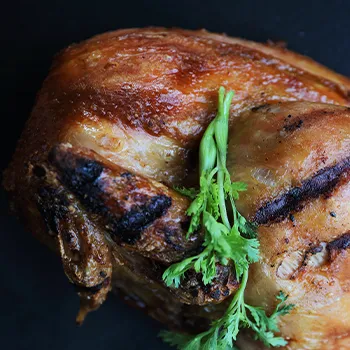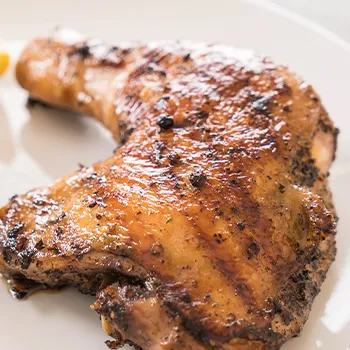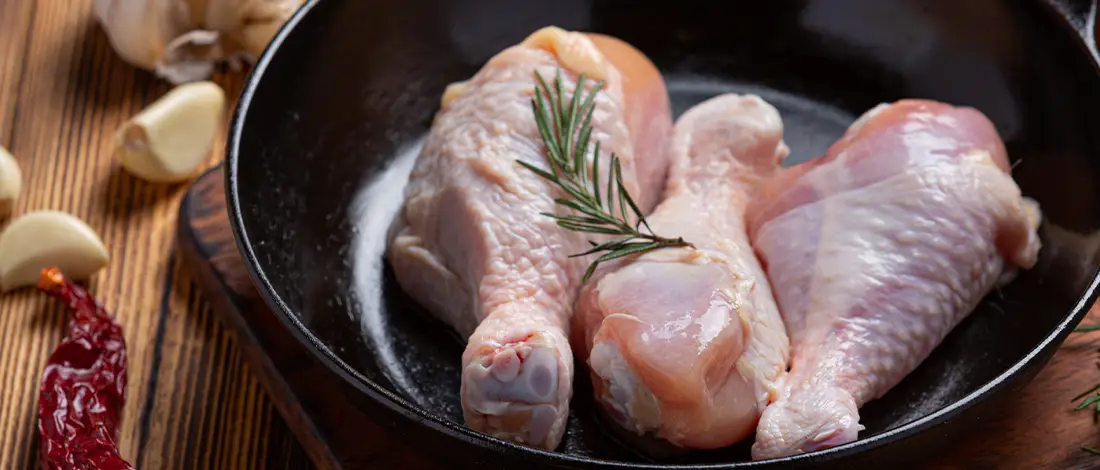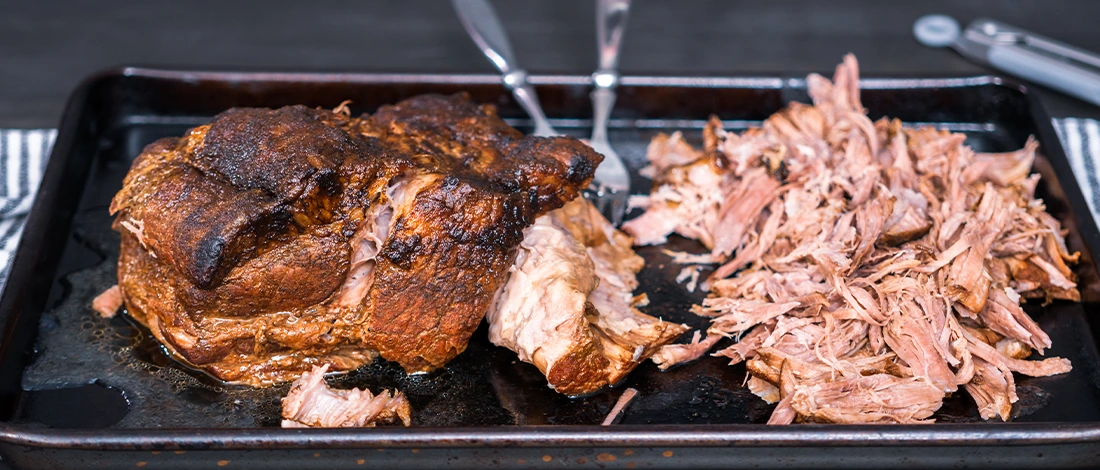Chicken breasts are a favorite part of the chicken for many people. But chicken thighs are a close runner-up, especially if you know how to prepare them properly.
The key to grilling the chicken thighs and ending up with juicy, flavorful meat every time is knowing how long to grill them.
I admit I’ve gone through a trial-and-error process myself when grilling chicken thighs.
But now, I can say with certainty that I’ve perfected my grilling skills. Today, I’ll explain exactly how long you should grill your chicken thighs for the best results. Let’s fire up the grill!
Quick Summary
- Grilling chicken thighs requires understanding the difference between bone-in and boneless thighs, with grilling times of 10-13 minutes and 8 minutes respectively.
- The process involves using indirect heat, monitoring the grill temperature, and ensuring the internal temperature reaches 165 degrees.
- According to a 2023 post from the USDA, even fully cooked chicken can have a pinkish tinge in meat and juices, and it's edible as long as it registers an internal temperature of 165°F (73.9°C).
- Using a meat thermometer is recommended for accurate temperature readings, and a dry rub or sauce can enhance the flavor of the grilled thighs.
How Long to Grill Bone-In Chicken Thighs?

If you’re planning to use a gas grill and want to prepare perfect grilled chicken thighs, the temperature on the grill should be about 450 degrees. You should use a gas grill with multiple zones for indirect grilling [1].
To achieve this, turn off one set of burners once the grill reaches the desired temperature and place the meat on the grill.
“Gas grills are easy to use because you can manage the fire with a turn of a button. Set up for indirect heat. If you have a three burner, put all the meat in the middle, higher heart on the outside, with lower heat in the middle to avoid flare-ups.”
- Grill Top Experience YouTube Channel
You should start by grilling the chicken thighs skin-side down to get perfectly crispy skin.
Grill for about 3 to 5 minutes. Don't grill for longer than this because it’ll be overcooked.
The next step is to flip them over and keep the chicken thighs skin-side up. Grill the thighs for about seven more minutes or until the internal temperature reaches 165 degrees. Check the temperature with a meat thermometer.
To sum up, the approximate grilling time for bone-in skin-on chicken thighs is 10 to 13 minutes.
How Long Should You Grill Boneless Skinless Chicken Thighs?

My favorite boneless grilled chicken thighs recipe begins by bringing the grill to around 400 degrees, which is medium-high heat.
After the grill reaches the desired temperature, sprinkle the chicken with salt and pepper, then grill each side for 3 to 4 minutes.
The next step is to flip the meat and grill the other side. Remove the grilled chicken thigh when the internal temperature reaches 165 degrees.
Let the meat rest for about five minutes before serving (and cutting). It will help the juices in the boneless chicken thighs redistribute nicely. By following these guidelines, you will end up with tasty meat worth five stars.
Note: You can also grill the meat on a charcoal grill. In this case, position the hot coals on one side and leave the other side empty.
How to Know When Grilled Chicken Thighs are Done?

Be careful here — the color of your chicken things doesn’t indicate if they are done or not.
According to a 2023 post from the USDA, even fully cooked chicken can have a pinkish tinge in meat and juices, and it's edible as long as it registers an internal temperature of 165 °F (73.9°C) [2].
Don’t forget to use a meat thermometer to check the internal temperature of the meat. This goes for both bone-in and boneless thighs.
If the temperature reaches 165 degrees, the meat is cooked.
If the temperature is higher than this, you may end up with overcooked, tough chicken pieces.
However, if you don’t own a meat thermometer, you’ll know your meat is done when the juices run clear once you move the chicken out of the grill grate and let it rest for one minute.
In case your chicken thighs aren’t done yet, you can return them and grill thighs some more.
Pro tip: If you don’t have it, my advice is to get a meat thermometer. It’ll be useful not only for chicken thighs but breasts as well, as they are difficult to cook evenly.
Related Article: How Much Time Should You Marinate Chicken?
How to Grill Chicken Thighs Without Burning Them?

Here are some tips on how to cook chicken thighs without drying or burning them:
- Don’t step away from the grilled chicken thighs; keep an eye on them, especially if you’re using a marinade with honey. Honey has sugar, which can burn, so move the grilled chicken thighs away from the hot side of the grill.
- Grill chicken on indirect rather than direct heat. If you put the chicken over a direct flame, the chicken skin is likely to burn.
- Don’t flip the chicken too early, or the outside can stick and burn on the grill.
- The grill temperature shouldn’t go over 400 degrees. You want juicy chicken thighs, and a temperature that is too high will dry them out.
Grilled Lemon & Rosemary Flattened Chicken Recipe

- Prep Time: 10 minutes
- Cook Time: 45 minutes
- Total Time: 55 minutes
- Number of Servings: 6
Ingredients
- 3 lemons sliced in half
- Zest of 2 lemons (lemon juice works fine, too)
- 5 springs of chopped rosemary
- 4 garlic cloves, finely chopped or grated
- 65g of olive oil (½ cup)
- 1 ½ teaspoons of salt
- 1 ½ teaspoon of pepper
- 1 whole chicken, backbone cut out, and breast bone pressed (ButcherBox provides premium chicken meat and is my go-to meat delivery service)
Instructions
- Place the chicken on a cutting board breast-side down, cutting along the backbone on both sides. Flip the chicken over and flatten it with the palm of your hand.
- Mix the lemon zest, garlic, rosemary, olive oil, salt, and pepper, stirring to combine inside a large ceramic or glass dish. Put the flattened chicken into the container, rubbing with the lemon, rosemary, and olive oil mixture on both sides. Marinate for at least 30 minutes, 4 - 6 hours being ideal.
- Preheat your grill over medium-high heat and add oil to the grill grates.
- Put the chicken on the grill skin side down, with an aluminum foil brick or baking dish. Grill chicken for 20 minutes, then flip the chicken skin side up. Place the same baking dish back on the chicken and continue cooking for 20-40 minutes. Your chicken will be ready when it reaches an internal temperature of 165ºF. The chicken skin should be golden brown and crispy.
- During the last 10 minutes of your cook, place the lemons on the grill.
- Remove the chicken from the grill, allowing it to rest for 10 minutes. Carve and serve with grilled lemon halves. Squeeze some lemon zest or lemon juice only on the chicken and serve.
A 1997 study published in the National Library of Medicine, found that marinating chicken before grilling on charcoal significantly reduced the formation of heterocyclic amine carcinogens. They found marinating is an effective method to reduce carcinogen concentration in grilled chicken [3].
References:
- https://www.masterclass.com/articles/whats-the-difference-between-direct-heat
- https://ask.usda.gov/s/article/What-color-is-safely-cooked-poultry
- https://pubmed.ncbi.nlm.nih.gov/9216741/








